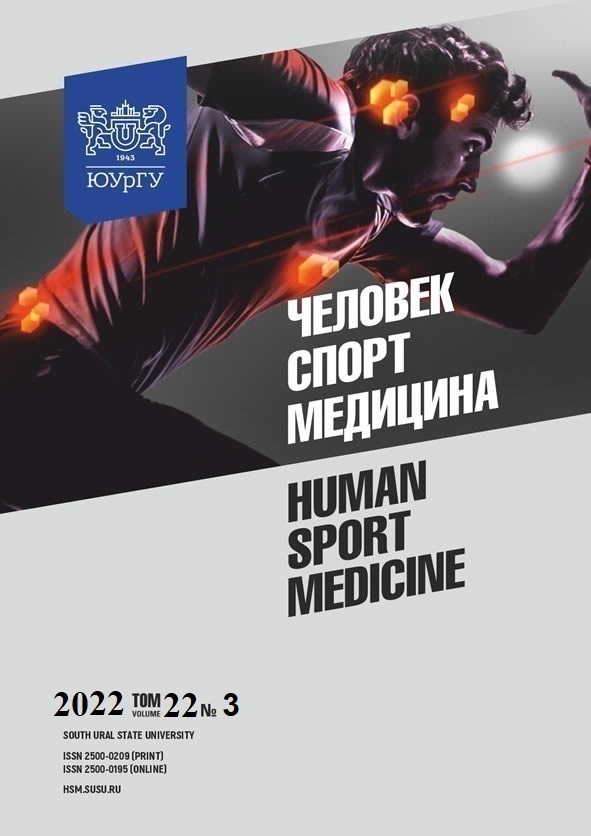MARKERS OF HORMONAL AND GENETIC ADAPTATION OF YOUNG ATHLETES UNDER COMBINED HYPOXIA AND PHYSICAL EXERCISE
Abstract
Aim. This paper describes hormonal and genetic profiles of trained athletes accustomed to hypoxia training and high exercise intensity. Materials and methods. Our study involved comprehensive physical examination of athletes, including blood measurements, cardiorespiratory examination, saliva and blood hormone measures, by means of enzyme-linked assays. The molecular and genetic features of athletes were identified through the amplification of genomic DNA fragments. Amplification was performed using polymerase chain reaction (PCR) in iQ5 amplifiers (Bio-Rad, USA) and the GeneAmp PCR System 9700 (Applied Biosystems, USA). Results. Short-term adaptation begins with an intensive release of stress hormones, including ACTH, testosterone, tyrosine, thyroid-stimulating hormone. Short-term adaptation to hypoxia is accompanied by increased testosterone levels and decreased thyroxine levels (19%, p < 0.01). The following genes were also examined: ACE I/D D/D, ACTN3 R577X (rs 1815739) R/R. The AMPD1 C34T, PPARG Rgo12A1a, COMT Vall58Me (rs 4680), IGF II G17200A (rs 680) G/G, IL-6 G174C (rs 1800795) G/G, HIF1A Pro582Ser (rs 11549465) T/T genes were detected. In trained athletes, all these genes exceeded those of low-skilled athletes. Conclusion. The results obtained showed that adaptation to hypoxia and physical exercise increased the adaptive properties of athletes. The markers of effective adaptation and sports performance depend on hereditary characteristics and body reserves.
References
References on translit
Copyright (c) 2022 Human. Sport. Medicine

This work is licensed under a Creative Commons Attribution-NonCommercial-NoDerivatives 4.0 International License.















